May 9, 2025
An In-Depth Amazon Seller Guide: How to Get Started Selling on Amazon
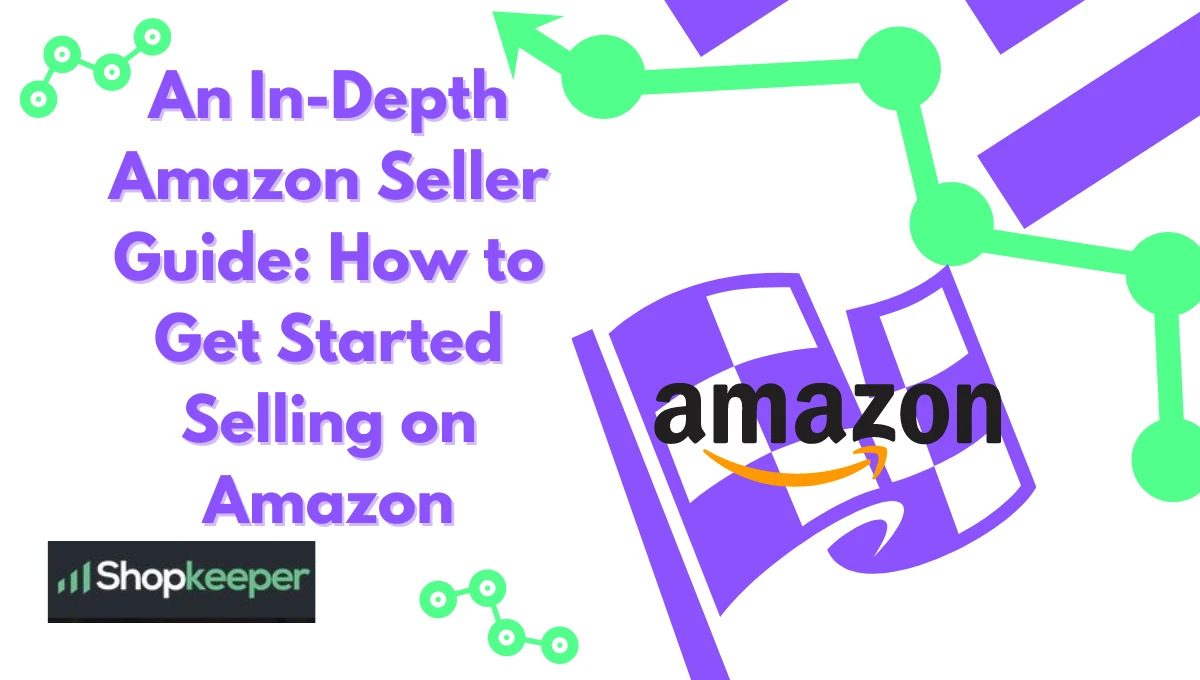
Selling online has now become synonymous with selling on Amazon—and for a good reason. It’s the largest online marketplace on Earth with millions of active sellers listing products across 36 unique categories. Since most of these sellers are profitable, selecting Amazon as the eCommerce platform of choice maximizes your chances of attaining financial success.
To aid you in your journey, we’ve created a comprehensive Amazon seller guide that covers topics, such as:
-
How to register on Amazon
-
The different types of business models
-
The cost of selling
-
Where to source products from
-
And much more.
Let’s dive straight into it!
Table of Contents
- Amazon Seller Getting Started Guide: Why Sell on Amazon?
- Is Being an Amazon Seller Profitable?
- Amazon Seller Getting Started Guide: Steps to Sell on Amazon
- How Much Money Do You Need to Sell on Amazon?
- How to Register as a Seller on Amazon?
- Requirements to Sell on Amazon
- Types of Amazon Business Models
- Is Reselling Allowed on Amazon?
- How is Amazon Profit Calculated?
- How Much Does It Cost to Sell on Amazon?
- Ways to Sell on Amazon
- What to Sell on Amazon?
- What Can I Sell on Amazon as a New Seller?
- Do You Need Your Own Products to Sell on Amazon?
- Things to Keep in Mind for the Launch
- Ready to Sell on Amazon?
Amazon Seller Getting Started Guide: Why Sell on Amazon?
There are myriad reasons why you should sell on Amazon. For now, let’s consider just one: Overall sales generated within the North-American region alone doubled from $80 billion in 2018 to $154 billion in 2020. Of course, the pandemic played a major role; however, the same level of growth was not observed for other online retail marketplaces.
Amazon is the place to sell. It equips users with powerful seller tools capable of generating in-depth reports along with the ability to market products to large audiences. There is no need to create a unique website or divert traffic to your store— everything can be done within the platform, provided you know how to fully utilize the seller dashboard.
Success can also be found on other platforms like eBay but, in our opinion, you stand a better chance of growing your business and generating sizable revenues by opening up a store on Amazon.
How Many Sellers Are There on Amazon?
Amazon has around 2 million active sellers worldwide with the highest concentration being in the United States.
How Many Marketplaces Does Amazon Have?
Amazon currently operates in 17 different marketplaces scattered across the globe. Each marketplace falls into one of four major regions:
-
Europe
-
Asia-Pacific
-
the Middle East;
-
And the Americas.
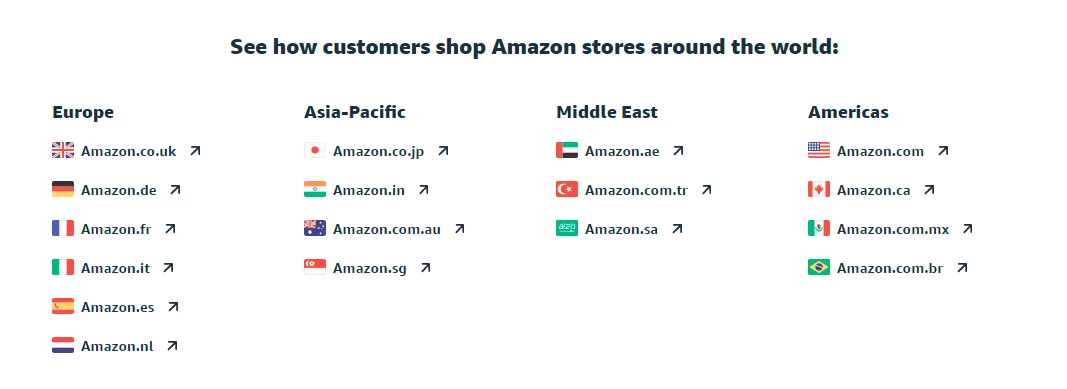
Amazon’s international marketplaces
Is Being an Amazon Seller Profitable?
Definitely!
According to research, most Amazon sellers manage to bring in at least $1,000 in sales per month whereas the best performing sellers manage to rake in around $250,000/mo.
Amazon Seller Getting Started Guide: Steps to Sell on Amazon
Even if you’ve been purchasing things on Amazon for years, selling is not that straightforward. Amazon allows sellers to do business in a number of ways and equips them with the virtual tools needed to succeed. After all, Amazon’s success is inextricably tied to the success of its sellers.
Building a business from the ground up all the way to selling hundreds of products is a step-by-step process. You must:
-
Successfully sign up for a Seller Central account.
-
Research and find a product.
-
Sourcing a supplier.
-
Procure a GTIN.
-
List and launch the product.
Before we dive into the thick of things, let’s answer a few commonly asked questions pertaining to selling on Amazon.
How Much Money Do You Need to Sell on Amazon?
There is no one-size-fits-all answer to this question.
However, a good figure would hover around $3,500, not including Sponsored Ads. To find out how we arrived at this figure, click on this link to learn more about the requirements needed to be a successful seller on Amazon.
How to Register as a Seller on Amazon?
Opening up an Amazon seller account is easy.
All you have to do is:
-
Click on the “Sign Up” button.
-
Select the “Create your Amazon account” option.
For a more in-depth look at the registration process, read our latest step-by-step guide on how to be an Amazon seller in the USA.
Requirements to Sell on Amazon
To sell on Amazon, you will need to provide the following details during the registration process:
-
Government ID
-
Credit card details
-
A phone number
-
Bank account details
-
A business email address or your Amazon customer account
-
Tax information
Types of Amazon Business Models
There is no shortage of opportunities, as well as business models, for entrepreneurs on Amazon.
New sellers can choose from one of six different ways to sell on the platform. The question is, which one should you pick? The answer depends on your preferences and budget.
Amazon business models include:
-
Private Label
-
Online and Retail Arbitrage
-
Wholesale;
-
And Dropshipping.
Some people include the Handmade business model as well, but we believe it has more cons than pros. Here’s how each of these models works:
-
Private Label: Private Label sellers purchase products from third-party manufacturers and brand them as their own. In doing so, they can purchase items at relatively low prices, add value by attaching their brand name and logo, and sell products at a profit.
This business model yields the greatest potential for profits and is also the most popular model among sellers. However, it also requires expertise in the marketing, branding, optimization, and sourcing domains.
-
Online and Retail Arbitrage: Online and Retail arbitrage represent the traditional method of online selling. The primary difference between the two is that in retail arbitrage sellers purchase goods from brick-and-mortar stores and proceed to sell them online.
On the other hand, in online arbitrage, sellers purchase items from one online marketplace/platform and attempt to sell them on another at a higher price. This method of doing business may seem simple, but sellers have to take into account different fulfillment and storage fees across various platforms to achieve profitability.
-
Wholesale: Wholesale can be lucrative provided you have enough money on hand to purchase the initial inventory. Sellers engaged in this form of business bulk purchase products directly from suppliers and list them on Amazon.
Extensive market research is needed to determine future demand for products. Otherwise, you could end up with a large stock of obsolete/unwanted items resulting in major financial loss. Anticipating demand and analyzing sales forecasts is crucial.
-
Dropshipping: In recent times, the dropshipping business model has attracted numerous sellers mainly due to the convenience involved. There is no need to take care of shipping, packing, or other aspects of logistics— you just have to sell products on behalf of your supplier.
The downside? There is little to no control over shipping methods and quality control. If products arrive late or damaged, the seller has to bear all the losses. Sourcing reliable sellers and establishing strong lines of communication is vital for drop shipping success.
In conclusion, we would recommend going for FBA Private Label. This is where sellers find the most success with relatively less amount of risk and effort involved.
Is Reselling Allowed on Amazon?
Reselling comes with a caveat: You'll need authorization from a brand to resell its items on Amazon. If you obtain the license, you can resell items without fear of getting your seller privileges suspended.
How is Amazon Profit Calculated?
It is essential to understand every Amazon fee to get a clear picture of your true profits. The constant changes in Amazon’s seller fee structure don’t make this any easier. Also, referral and FBA fees vary based on the product size, type, and even category. As a newcomer to the platform, there are 3 main types of fees you need to account for:
-
Manufacturing Cost: The cost of manufacturing or creating the product.
-
Landing Cost: The costs incurred for picking up the inventory from the manufacturing hub and transferring it to one of Amazon’s fulfillment centers. If the inventory is manufactured in another region or country, then extra costs are added such as shipping, customs, tax, clearance, etc.
-
Selling on Amazon fees: The commission Amazon charges for listing products on its website.
-
FBA fees: Provided sellers are engaged in FBA (as most of them are), the FBA fee is the amount Amazon charges sellers to pick, pack, and ship products directly to the customer.
An easy way of calculating these four costs is by using Amazon’s own FBA profitability calculator as seen in the image below.
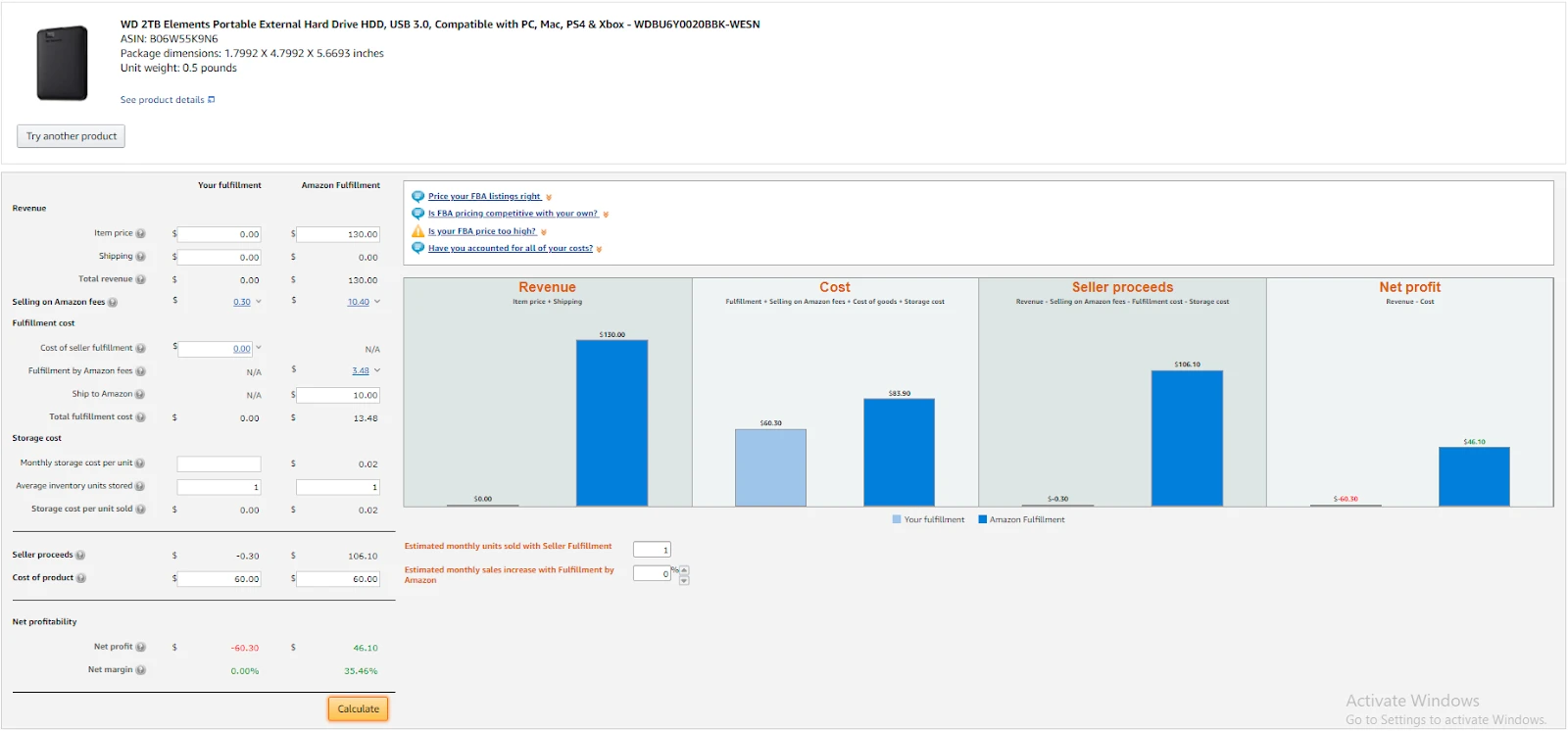
Amazon FBA Profitability Calculator
It’s worth mentioning that while the FBA calculator is incredibly useful, it fails to take into account every single fee sellers incur. Plus, it only provides data for one product at a time making it difficult to gain a holistic picture of the overall finances. This raises several problems, not least of which are inaccuracies related to your bottom line.
The solution? A complete third-party profitability dashboard like Shopkeeper. It removes the need to maintain manual reports to waste time with Excel sheets— everything is accessible via an app that lets you focus on growing your business.

How Much Does It Cost to Sell on Amazon?
The cost of selling on Amazon depends on the selling plan. There are two options to choose from: Individual and Professional plans.
The Individual plan costs $0.99 per item sold (exclusive of other fees), whereas the Professional plan will set you back $39.99/mo. (exclusive of other fees).
The most feasible strategy here is to start with the Individual plan until you’re able to manage 40 units of sale each month. Once you reach this milestone, upgrade to the Professional plan.
What Is the Amazon Referral Fee?
Amazon charges sellers a percentage-based referral fee for each item sold. This fee varies from one product category to another. For a complete look at the fee structure, visit Amazon’s official “Selling on Amazon Fee Schedule” page.
Ways to Sell on Amazon
There are three main ways to sell on Amazon:
-
FBA or Fulfilled by Amazon
-
FBM or Fulfilled by Merchant
-
Seller Fulfilled Prime
Each type comes with its pros and cons.
What is Amazon FBA?
Amazon FBA is the most popular fulfillment service on Amazon. By enrolling in the FBA program, all sellers have to do is deliver their inventory to the nearest Amazon fulfillment center. From there, Amazon will pick, pack, and ship products to customers and also provide customer support services. Needless to say, all of this comes at a cost.
How Much Does FBA Cost?
The FBA fee is fixed and is applied to each unit sold. It’s based on the weight and dimensions of the item. There is a lot of complex math that goes into figuring out the cost. Visit this link to learn more about how FBA costs are calculated.
What is FBM on Amazon?
FBM or Fulfilled by Merchant is a self-fulfillment program, meaning the seller is the one that has to take care of all storage, packing, transport, and customer-related tasks. It is less popular than FBA (for obvious reasons) but proves to be advantageous in certain situations.
Is FBM Cheaper Than FBA?
Again, the answer depends on several factors. Sellers should opt for FBM if:
-
They experience relatively slower sales velocity
-
They want greater control over customer support
-
They sell heavy or large-dimensional products
-
They can handle the logistics
On the other hand, FBA makes more sense for sellers if:
-
The cost of self-fulfillment is greater than FBA
-
They have no desire to handle the logistics
-
Sell lightweight products
-
They have fast inventory turnover rates
-
They would rather let Amazon handle customer support
Can I Do FBA and FBM?
Yes. A sizable chunk of Amazon sellers is engaged in both FBA and FBM. For example, let’s say you’re selling two products, one is lightweight and has a high sales velocity whereas, the other has large dimensions but doesn’t sell all too well. You can use FBA for the former and FBM for the latter to reduce seller costs.
What Is the Best Way to Sell on Amazon?
In our opinion, the best way to sell on Amazon is through Private Label FBA. It allows you to build, market, and sell a unique brand on the largest eCommerce platform and simultaneously outsource the most tedious parts of online selling.
What to Sell on Amazon?
Now that we have the ‘why’ out of the way, let’s decide what we want to sell. As we mentioned at the start of this blog, there are 36 product categories on Amazon, meaning that there’s no shortage of items to sell. The abundance of choices has also created ample opportunities for you to carry out market research to determine the best product category to sell in.
However, Amazon places barriers to entry for some product categories, which is why they are also referred to as ‘gated’ product categories. Some gated categories require sellers to own a Professional account (more on that later), some require approval, and some are completely barred to third-party sellers. This is to protect the buyers and keep in line with local and international regulatory authorities.
Here are a few examples of restricted products:
-
Alcohol
-
Electronics
-
Food & Beverages
-
Weapons, Explosives, or Related Items
-
Gambling & Lottery
-
Surveillance Equipment
-
Tobacco & Related Products
-
Laser Products
-
Cosmetics & Hair/Skin Care
-
Drugs
To gain a better understanding of restricted products and categories, visit this link.
What Can I Sell on Amazon as a New Seller?
As a new Amazon seller, we recommend sticking to non-gated categories because obtaining approval to sell restricted products can be a long and arduous process. We’ve already mentioned the ideal performing categories, but just because sellers are averaging high profits within a particular niche doesn’t necessarily make it suitable for new sellers.
Here are a few features you should keep in mind when hunting for viable products:
-
Fewer Variations: Products with more than four variations require more budget for inventory. Also, it makes it harder to forecast demand, and sellers need to undergo trial and error to identify the best-performing variation. Generally speaking, fewer variations results in less hassle.
-
Fast Shipping Time: This also includes the time it takes to manufacture a product. Products that take relatively shorter amounts of time to manufacture and ship to Amazon’s warehouse reduce the risk of OOS (Out Of Stock) situations.
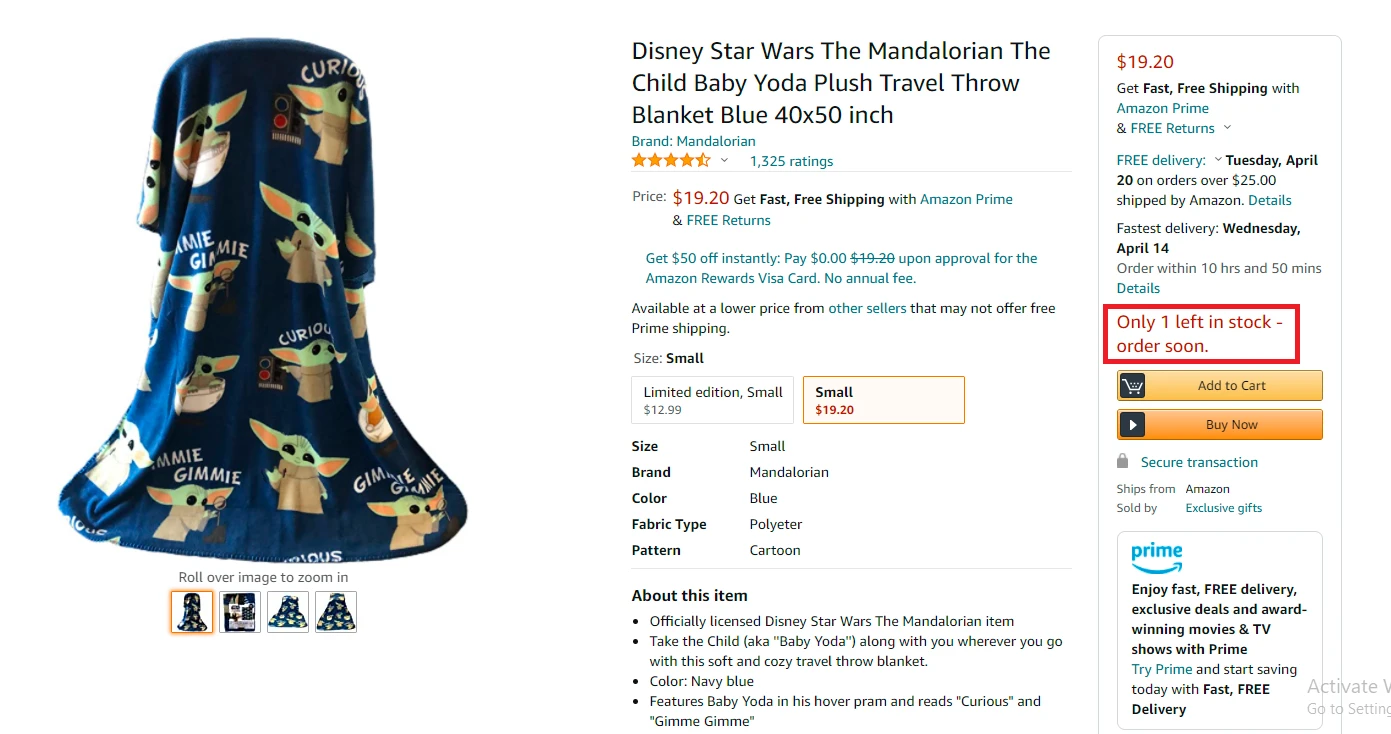
Product about to go Out Of Stock
The benefit of fast shipping times is threefold:
-
Accurate re-order estimates
-
Prevent BSR from increasing due to OOS
-
Maintain high levels of customer satisfaction
-
Super-Niche Products: High-demand product niches may appear tempting at first, but make no mistake, they’re equally as competitive. The trick to succeeding as a new seller is to find a niche within a niche. Sure, profits are important, but so is the knowledge of how to maneuver and find success with your first product launch.
Try to sell high-quality products within a sub-category with medium to low demand and you’re sure to start generating healthy revenues.
Top Selling Items on Amazon
There are two sure-shot methods of finding out the top-selling or top-performing items on Amazon. The first is via reading the Brand Analytics report available for download to brand registered sellers. The second—and more convenient—method is by checking out the “Best Seller” section on Amazon’s website.
Apart from gaining access to seller insights via the Brand Analytics monthly report, there are plenty of other advantages associated with the brand registry. Once your business is up and running and you have a fair idea of how seller central works, we recommend applying for a brand registry by visiting this link. The following is information regarding the top-performing product niches for March 2021.

Brand Analytics Report for March 2021
The image above is a screenshot of what a typical Brand Analytics Report looks like. It can seem confusing at first but the data is pretty simple to decipher. Based on the information in this report, the most popular products on Amazon USA currently are as follows:
-
Electronics
-
Tools & Home Improvement
-
Office Products
-
Home & Kitchen
-
Video Games
If all of the above seems too complicated, simply head on over to Amazon.com, select the “Best Sellers” option, and choose whichever niche and sub-niches you wish to explore as shown in the image below.
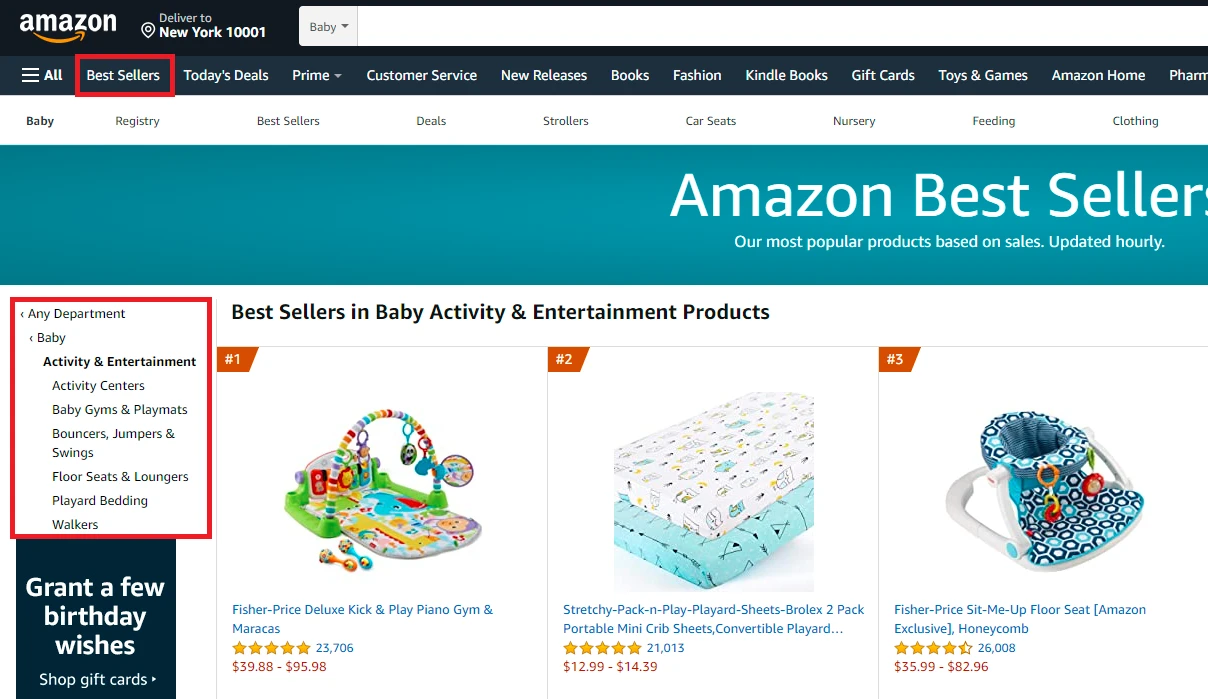
Bestseller categories on Amazon
This research method is available to all sellers. Though if you want to take your research game to the next level, we recommend checking out third-party Amazon seller tools for a more informed decision-making process.
Do You Need Your Own Products to Sell on Amazon?
Yes and no. Whatever you’re selling has to be done under a unique brand name; you cannot resell products that already belong to an established seller without a permit. In case you manufacture products and wish to sell on Amazon then that is permissible.
Where to Find Suppliers for Your Product
There is no hard-and-fast rule for sticking to one location for sourcing products. If you’re based in the US, you can find suppliers on your home soil. However, what makes platforms like Alibaba.com so popular is that most of the time sourcing and shipping products from China turns out to be more economical than sourcing products from within the United States.
Alibaba.com is a great place to start— but it isn’t the only option out there. There are other viable places to get in touch with suppliers including but not limited to 1688.com, ThomasNet, and eWorldTrade. Let’s talk about Alibaba and 1688.
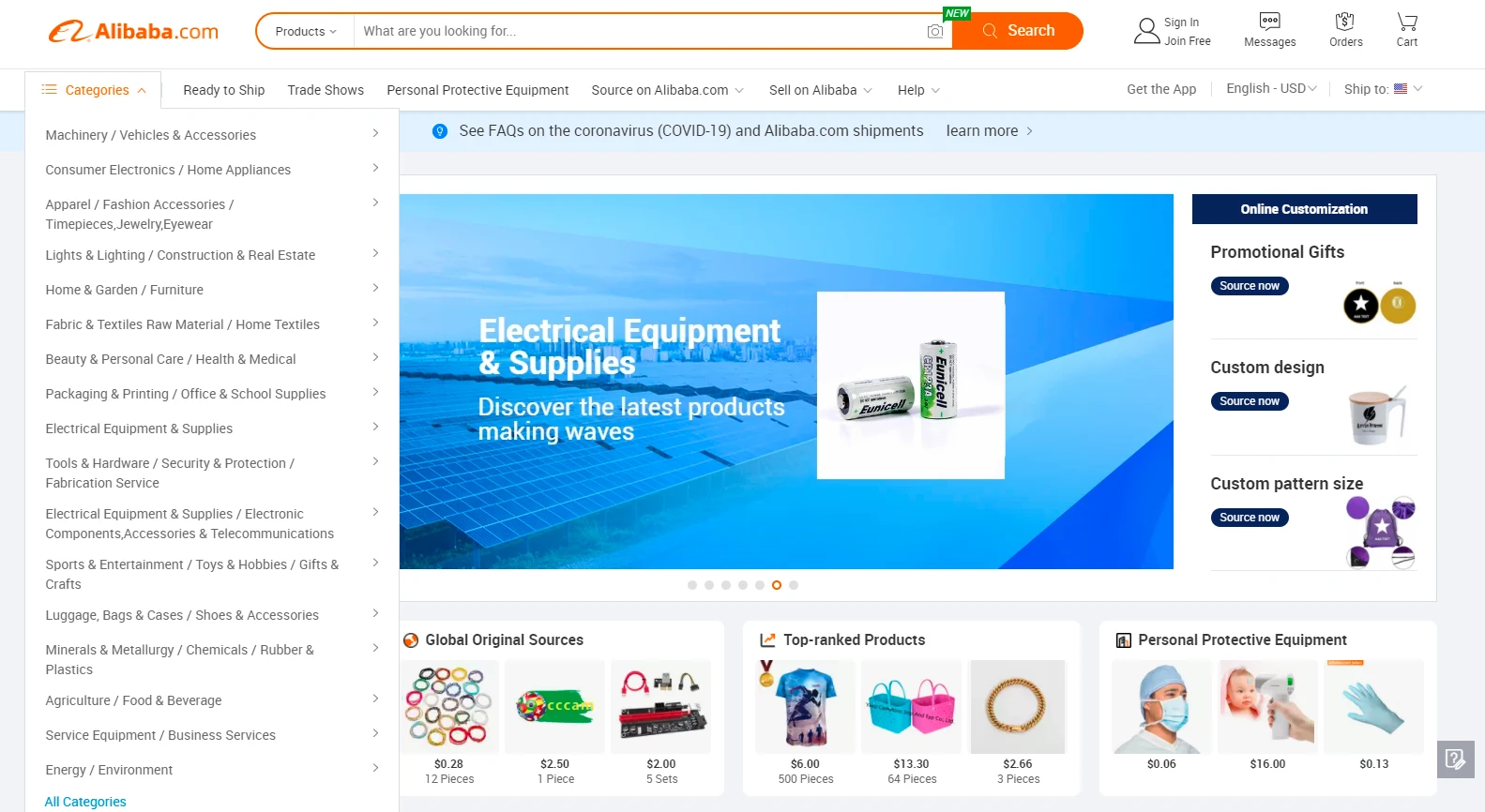
Alibaba.com front page
Alibaba.com is the ideal place to start looking for products. Here, you can find a manufacturer for virtually any product listed on Amazon. The challenge for newcomers is to learn how to communicate and negotiate prices with Chinese suppliers. Some important terms to understand when browsing through the website are:
-
MOQ: Stands for Minimum Order Quantity—the minimum number of units a supplier is willing to ship per order.
-
Trade Assurance: Alibaba’s customer-protection system helps resolve disputes in case of unfair practices.
-
Supplier Online Performance Index or ‘Gems’: A supplier rating system that ranges from 1-5 red ‘gems’ indicating their performance based on set metrics.
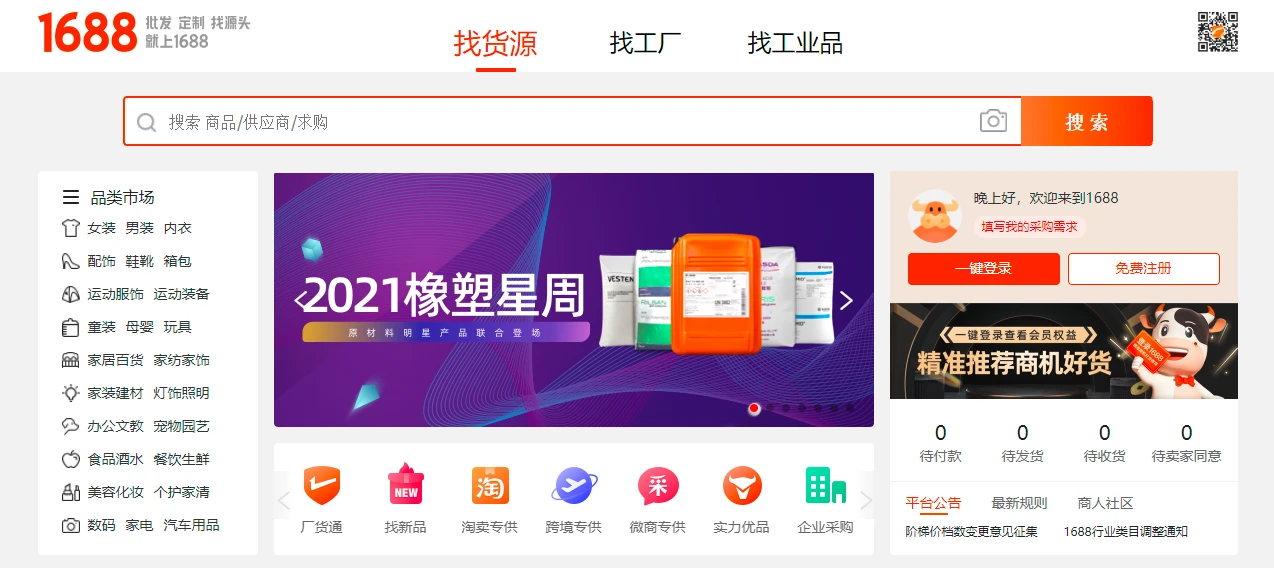
1688.com front page
1688.com is another great sourcing platform that’s also based in China. Since it primarily caters to local sellers, procuring low rates and high-quality products isn’t that difficult. The only downside is that it doesn’t feature English support. Locating suppliers that speak other than Mandarin can be a challenge and using Google translate won’t get you that far.
Hiring or partnering up with a Chinese-speaking seller makes it possible to get in touch with the best suppliers.
Things to Keep in Mind for the Launch
Up till now, we’ve managed to learn how to find the right product to sell on Amazon, as well as the best places to source, said products. Now, we enter the final stage of our selling journey: The product launch.
Explaining every facet of the launch phase is beyond the scope of this article. We will, however, attempt to highlight and discuss the main points that sellers need to keep in mind when finally opening up their virtual store to their customers. This includes creating an optimized listing, planning and executing PPC campaigns, leveraging Amazon promotions, and enrolling in the Vine program.
Create an Optimized Listing
A ‘listing’ refers to the product detail page that pops up whenever a visitor clicks on a product. An example is seen in the image below.

Example of a product listing
When creating a product listing, follow these steps to maximize sales and conversions:
-
Upload at least 6 high-quality product images with the main one having a white background. The recommended resolution for these images should be 2000 x 2000 pixels.
-
The product title should first mention your brand name/main keyword, followed by the product name, features, and specifications.
-
Create 5 bullet points each mentioning a clear benefit of the product along with secondary keywords.
-
The product description section allows for 2000 characters. Mention any left-out details in this section.
Note: Here’s an exhaustive guide on how to optimize your product listings.
Plan Out Your PPC Campaign
Effective marketing and advertising campaigns on Amazon are almost always spearheaded by well-researched and well-executed PPC (Pay-Per-Click) campaigns. It happens to be the most powerful tool you have in your marketing arsenal which, if used correctly, can drastically increase sales and revenue.
Start small. Allocate around $20/day to run two types of PPC campaigns: manual and automatic. In the manual campaign, target high-search volume keywords and do away with keywords that underperform. Getting results from PPC campaigns has to do a lot with trial and error. Let the campaigns run for a while and increase the budget where you see fit.
Take Advantage of Amazon Promotions to Boost Sales
There are a number of Amazon promotions available to sellers to boost sales, especially during the holiday season. Examples include Buy One Get One Free (BOGO), percentage-based deals, coupons, and seasonal events such as Cyber Monday and Black Friday deals.
Enroll in the Vine Program
The Vine program was designed to help new sellers get a much-needed boost and hit the ground running. By enrolling in the Vine program, sellers submit a few units for testing and review by Amazon-recognized buyers. Provided you have worked on creating a high-quality product, the outcome will always be positive.
Ready to Sell on Amazon?
There you have it— a comprehensive Amazon seller guide to help you successfully sell on Amazon.
With all of this knowledge at your disposal, selling on Amazon can still seem like an intimidating task. Why not make it easier? Shopkeeper is a profitability dashboard that combines 72 different types of Amazon fees and provides powerful insights needed to make the right decisions.
We’d love to be part of your selling journey and help you in any way we can. Here’s a free 14-day trial of our software!




